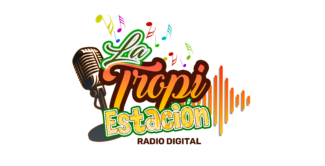Understanding Digital Radio: Features and Advantages
Digital radio represents a significant advancement over traditional analog radio broadcasting. By converting audio signals into digital data, this technology ensures enhanced audio quality and offers listeners a clearer sound experience. Unlike analog radio, where sound quality can degrade due to interference or signal loss, digital radio maintains its audio integrity, delivering crisp and rich sound. This transition to digital technology allows for a more efficient use of the radio spectrum, enabling broadcasters to transmit multiple channels within the same frequency, thereby increasing the variety of listening options available to audiences.
One of the key features of digital radio is its capability to transmit additional data services. This includes song titles, artist information, and even traffic updates, which can significantly enhance the listening experience. For instance, listeners can view real-time information about the music being played, allowing them to discover new artists and tracks easily. This interactivity not only engages listeners but also provides an enriching layer of context that analog radio fails to offer.
The advantages for both listeners and broadcasters are numerous. For listeners, digital radio opens up a broader array of channels, often presenting niche genres and specialized programming that may not be available on traditional radio. Moreover, digital broadcasts are less susceptible to interference, resulting in more reliable reception even in challenging environments. Broadcasters, on the other hand, benefit from the ability to reach larger audiences more effectively and deliver high-quality content with minimal transmission costs. As the media landscape continues to evolve, the adoption of digital radio heralds a new era of broadcasting that prioritizes superior audio quality and user engagement.
The Transition to Digital: Opportunities and Challenges
The ongoing transition from analog to digital radio broadcasting is a significant trend that is reshaping the audio landscape across various regions. As technology continues to advance, broadcasters are presented with numerous opportunities to enhance their offerings and reach new audiences. Digital radio allows broadcasters to deliver higher audio quality, diverse content, and a wider range of channels, catering to the preferences of younger listeners who increasingly gravitate towards digital platforms.
Digital radio has the potential to engage audiences in innovative ways. For instance, broadcasters can incorporate interactive features, such as real-time voting on programs or integrating social media elements. These enhancements can foster a sense of community among listeners and create more engaging experiences. Moreover, the use of advanced analytics in digital broadcasting enables stations to understand listener preferences and fine-tune their content accordingly, bridging the gap between traditional broadcasting and modern consumer habits.
However, the transition to digital broadcasting does not come without challenges. Significant investment in infrastructure is required to support the new technology. Stations may need to upgrade their transmission equipment and adopt new protocols to ensure seamless delivery of digital content. Furthermore, during the transition period, listeners may experience confusion as they navigate the shift from analog to digital. This could result in a temporary decline in audience numbers as consumers adjust to the changes.
Additionally, the competition from streaming services poses a substantial challenge to traditional radio broadcasters. With an increasing number of listeners turning to platforms like Spotify and Apple Music for their audio needs, radio stations must find ways to differentiate themselves and retain their audience. The quality of content, unique programming, and strong community ties may play crucial roles in attracting and keeping listeners engaged during this transformative period.
